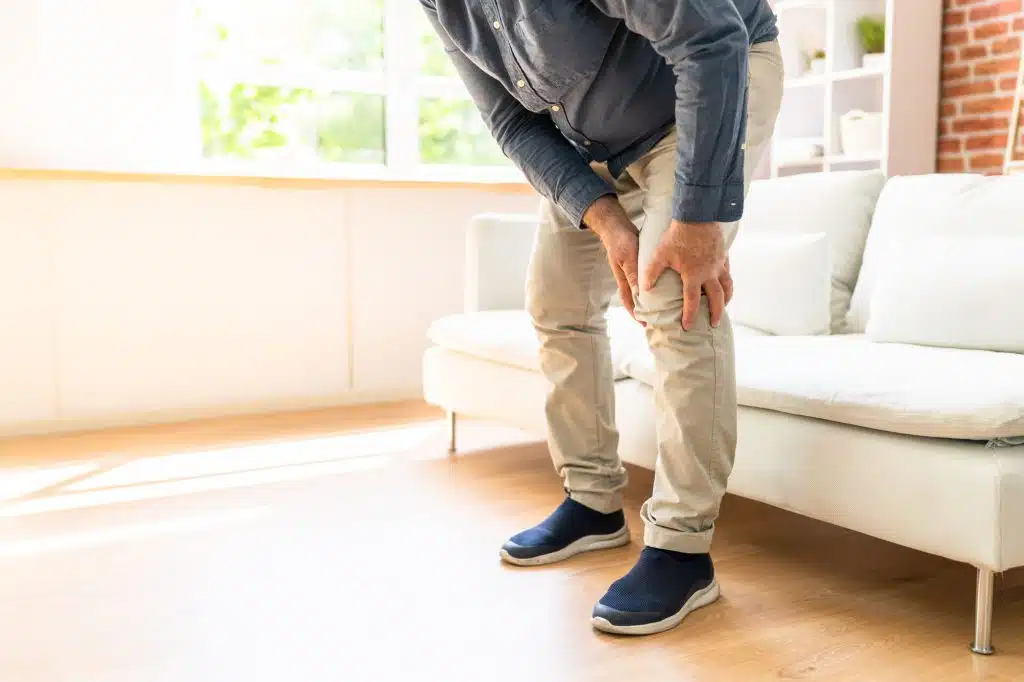At first, pain seems like an inconvenience, one you hope will go away with time and rest. But the longer it lasts, the more bothersome pain becomes until it seems to affect every corner of your life. In reality, chronic pain can lead to issues far beyond the immediate pain itself. Here are five ways pain can wreak havoc on your life.
- Pain limits activity levels, which can lead to a further reduction in overall health. In a 2004 study, 28% of adults experiencing back pain limited their activity.[1] And this holds true for people of all ages, from youths[2] to older individuals.[3] Lack of activity and exercise, in turn, can lead to weight gain, which can worsen many chronic pain conditions.
- Pain has been proven to weaken the immune system. This can slow healing and make us less resistant to infection and disease.[4] Pain is particularly linked with higher rates of cancer recurrence and mortality, especially for those with breast, head and neck, lung and colorectal cancers.
- Pain leads to an inability to concentrate. In a study of individuals with chronic spinal pain, 17.3% experienced problems with concentration, while 20.2% had issues with memory.[5] This may be, in part, due to the altered brain morphology caused by pain, which leads to various cognitive and emotional difficulties. This side effect of pain seems to be even more common among individuals taking opioids. In one comprehensive study of such patients, 70% of respondents reported difficulty concentrating.[6] This inability to concentrate can have innumerable effects on life. In one study of pain patients, it was found that problems in concentration and memory “were related to emotional distress, poor family support and interference with daily activities.”[7]
- Pain may be sapping your motivation. If you often find yourself thinking “Why bother?” it may be because of changes in key parts of the brain due to pain. In a study of mice published in the journal Science,[8] researchers found that hungry mice with chronic pain were less likely to work hard for food, despite being physically capable. Even when the pain was temporarily relieved, their motivation didn’t return. This was due to a permanent change in the brain region known as the nucleus accumbens.
- Pain is linked to serious psychological distress. Research last year from the University of California in Irvine and UCLA suggests that there may be a direct link between pain and depression, anxiety and substance abuse, which are seen in at least half of long-term pain patients.[9] This may be due, in part, to brain inflammation in various regions brought about by chronic nerve pain. The resulting symptoms may be a contributing factor to the high suicide rate among chronic pain sufferers, which is second only to bipolar disorder as an illness-related cause of suicide.
These effects of pain can be devastating, causing both emotional and physical issues for pain sufferers. It’s important, then, that in treating pain, each of these issues is addressed. That’s where a multidisciplinary approach comes in. Through interventional procedures, physical therapy and behavioral health care, among other complementary components, individuals with chronic pain can get moving again, shaking off the haze of depression, returning to a healthy, active lifestyle and once again embracing the things they love.
References
[1] U.S. Department of Health and Human Services: Centers for Disease Control and Prevention. “Health, United States, 2006. With Chartbook on Trends in the Health of Americans.” 2006. Accessed June 8, 2016. http://www.cdc.gov/nchs/data/hus/hus06.pdf
[2] Rabbitts, Jennifer A., Amy Lewandowski Holley, Cynthia W. Karlson, and Tonya M. Palermo. “Bidirectional Associations Between Pain and Physical Activity in Adolescents.” The Clinical Journal of Pain 30, no. 3 (March 2014): 251-58.
[3] Mackichan, F., J. Adamson, and R. Gooberman-Hill. “‘Living within Your Limits’: Activity Restriction in Older People Experiencing Chronic Pain.” Age and Ageing 42, no. 6 (November 2013): 702-08.
[4] Page, Gayle G. “The Immune-Suppressive Effects of Pain.” Madame Curie Bioscience Database. Accessed June 8, 2016. http://www.ncbi.nlm.nih.gov/books/NBK6140/
[5] Melkumova, K. A., E. V. Podchufarova, and N. N. Yakhno. “Characteristics of Cognitive Functions in Patients with Chronic Spinal Pain.” Neuroscience and Behavioral Physiology 41, no. 1 (January 2011): 42-46.
[6] Michaelson, David. “Voices of Chronic Pain.” American Pain Foundation. May 2006. Accessed June 8, 2016. http://www.davidmichaelsoncompany.com/documents/voices%20of%20chronic%20pain%20report.pdf
[7] Jamison, R. N., T. Sbrocco, and W. C. Parris. “The Influence of Problems with Concentration and Memory on Emotional Distress and Daily Activity in Chronic Pain Patients.” The International Journal of Psychiatry in Medicine 18, no. 2 (1989): 181-91.
[8] “Study Reveals Brain Mechanism behind Chronic Pain’s Sapping of Motivation.” Stanford.edu. July 31, 2014. Accessed June 08, 2016. https://med.stanford.edu/news/all-news/2014/07/study-reveals-brain-mechanism-behind-chronic-pains-sapping-of-mo.html.
[9] “UC Study Links Brain Inflammation Triggered by Chronic Pain to Anxiety and Depression.” University of California Irvine. June 9, 2015. Accessed June 08, 2016. https://news.uci.edu/campus-life/students/uc-study-links-brain-inflammation-triggered-by-chronic-pain-to-anxiety-and-depression/.











